Piping materials play a crucial role in a wide range of industries, from construction and agriculture to water management and industrial applications. Among the most common materials, High-Density Polyethylene (HDPE) and Polyethylene (PE) pipes are often misunderstood or used interchangeably, despite possessing distinct characteristics that can significantly impact performance, durability, and cost-efficiency. This article is designed to demystify the key differences between HDPE and PE pipes, providing you with a clear, detailed understanding of their composition, features, and best applications. Whether you’re a contractor, engineer, or decision-maker in the field, this comprehensive guide will equip you with the knowledge necessary to make informed choices tailored to your specific requirements.
Composition and Properties
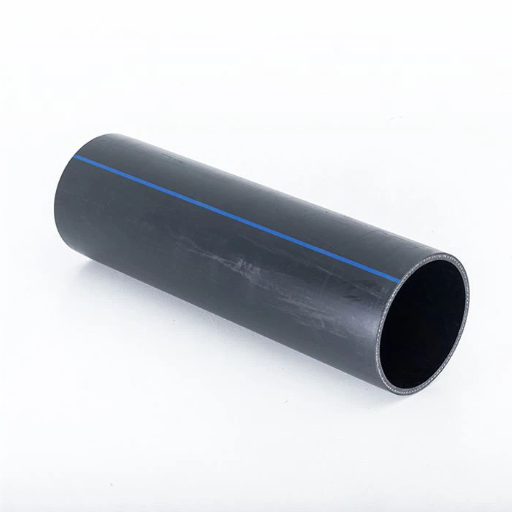
Chemical Composition of HDPE and PE
High-Density Polyethylene (HDPE) and Polyethylene (PE) are both derived from the polymerization of ethylene monomers, resulting in long hydrocarbon chain polymers. However, HDPE’s molecular structure sets it apart from other types of polyethylene, including Low-Density Polyethylene (LDPE) and Linear Low-Density Polyethylene (LLDPE). HDPE is highly linear with very little branching, granting it stronger intermolecular forces and higher density values that range from around 0.941 to 0.965. This arrangement of molecules tends to confer tensile strength, rigidity, and resistance to chemical attack.
In general, another kind of PE, which could show the wider range of densities and branching structures, can, on the contrary, lean toward flexible properties. The density of PE will vary widely with the degree of branching during polymer synthesis. For example, LDPE features a lot of branching that prevents the molecules from packing close to each other, thereby forming a material with relatively lower density, below around 0.930 g/cm³.
Key additives such as antioxidants, UV stabilizers, and pigments may also be used during the manufacture to change the performance properties of these two materials. Because of its inherent strength, HDPE is often slightly modified, while PE may need to be modified more often for flexibility, depending on its use.
HDPE’s distinct chemical structure makes it suitable for industrial and high-pressure applications, while general PE, being softer, is often reserved for light-duty applications. The knowledge of these basic compositions establishes a basis for selecting materials suitable for different fields.
Physical Properties of HDPE Pipe vs PE Pipe
The densities, strengths, and durability of HDPE pipes are generally much higher when compared to PE pipes, which are flexible and weigh less but are not good at bearing pressures.
|
Key Point |
HDPE Pipe |
PE Pipe |
|---|---|---|
|
Density |
High |
Medium |
|
Strength |
High tensile |
Moderate tensile |
|
Durability |
Long-lasting |
Less durable |
|
Flexibility |
Moderate |
High |
|
Pressure |
High resistance |
Lower resistance |
|
Chemical Resist. |
Excellent |
Good |
|
Weight |
Heavier |
Lightweight |
|
UV Stability |
High |
Moderate |
|
Cost |
Higher |
Lower |
|
Applications |
Industrial, Municipal |
General, Packaging |
Density Differences Between HDPE and PE
HDPE holds a higher density (930 to 970 kg/m³) than PE, depending on the types (LDPE, MDPE, HDPE), which have lower ranges of density.
|
Key Point |
HDPE |
PE (General) |
|---|---|---|
|
Density |
930-970 kg/m³ |
Varies by type |
|
LDPE Density |
N/A |
910-940 kg/m³ |
|
MDPE Density |
N/A |
926-940 kg/m³ |
|
Branching |
Low |
High (LDPE) |
|
Strength |
High |
Moderate |
|
Flexibility |
Moderate |
High (LDPE) |
|
Applications |
Industrial, Pipes |
Packaging, Films |
Manufacturing Processes
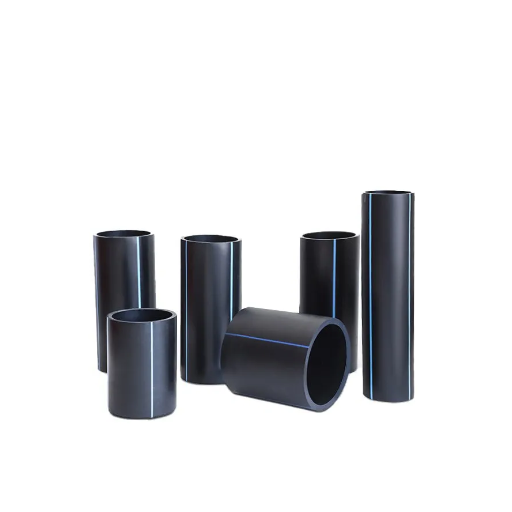
How HDPE Pipes are Manufactured
Producing HDPE pipes is a precise and systematized process that guarantees high standards for technical applications and various field usages. The entire process begins with the competent selection of HDPE resin, always with additives to impart UV stability, abrasion resistance, and longevity.
The crucial first stage is the extrusion process. HDPE pellets are fed into an extruder, where melting of the resin is achieved by controlled heating, together with mechanical shear. This polymer melt is pushed through a die, thereby assuming the shape required-that of a pipe. Uniform melting is very important because any difference affects the structural integrity of the pipe.
The next stages calibration and cooling are established once the pipe leaves the die. Calibration is through vacuum or pressure equipment that maintains dimensional accuracy, while underground cooling tanks solidify the shape during its progress down the production line. Advanced cooling techniques have been employed to increase output while protecting from material warping or cracking.
There has to be another rigorous quality test after manufacturing to conform to strict international standards such as ISO 4427 or ASTM F714. The pipes are examined for wall thickness, ovality, tensile strength, and pressure resistance. Nondestructive ultrasonic testing is generally practiced for finding defects to guarantee reliability.
These manufacturing processes, together with automation and new materials science innovations, place HDPE pipes among the finest selection for applications in water distribution, gas pipelines, and industrial systems, thereby providing a perfect balance between strength, flexibility, and economics.
PE Pipe Manufacturing Techniques
Manufacturing the PE pipe finalizes far from ensuring the most critical controlled processes on a precision-based order. Generally, the production starts with melting polyethylene resin, which is fed into the special-type extruder. The extruder will then dangerously heat and homogenize the resin to alleviate any inconsistency that may exist. Advanced and robust temperature and pressure-controlled systems are put in place so that the polymer’s identity does not degrade throughout this stage.
With the molten polymer out of the extruder, the tubular shape is formed therewith. At the moment of formation, dimensions of the pipe, such as rates of diameter versus wall thickness, are checked with utmost care to meet standards that may be ASTM or ISO certified. These pipes would later be cooled in calibration tanks using either water or air, to rapidly absorb heat from the material while still standing firm on dimensional accuracy.
To provide a longer service life and enhanced performance characteristics to PE pipes, additives such as UV stabilizers, antioxidants, and colorants can be introduced during the compounding stage. These substances provide improved resistance against environmental factors such as UV radiation and oxidative degradation.
Quality is controlled at every stage of the manufacturing process. Pipes undergo intensive testing consisting of hydrostatic pressure testing, tensile elongation testing, and impact resistance testing. These tests are supplemented by the use of advanced laser measurement systems to ensure pipes always conform to ovality and wall uniformity tolerances. For this reason, these testing methods, coupled with technological breakthroughs such as multilayer extrusion for maximized functionality, prove the great leap forward that PE pipe manufacturing is undergoing at the moment.
Quality Control in Pipe Production
The implementation of advanced technological systems in refining QC measures in pipe production has added to enhanced reliability and performance. To this effect, modern factories use automated systems like real-time scanning technologies and ultrasonic NDT to detect any internal or external anomalies in pipes that are under production. These systems would detect defects with better accuracy, given any inclusions or cracks, or voids, so that the product possibly would never get into the market with compromised integrity.
There should be precision dimensional control. The automated laser gauging would help in continuous real-time feedback on pipe diameter, thickness, and roundness that could immediately accept corrective adjustments to maintain a solid, tight tolerance. At the same time, harmonic ultrasonic inspection systems allow the entire weld seams in steel pipes to be inspected, guaranteeing the level of uniformity in design while eliminating the weak points in the structure itself.
In recognition of the increasing demand for greener production, quality control also considers the testing of advanced materials. This ideally includes spectroscopic analysis to check polymer purity and composition, and thermal analysis methods such as differential scanning calorimetry (DSC) for indicating variations in material performance when subject to changing conditions. Such state-of-the-art methods and processes thus form a system capable of ensuring permanent quality of the product concerning the criteria laid down by ISO 9001 or ASTM standards.
Advantages and Disadvantages
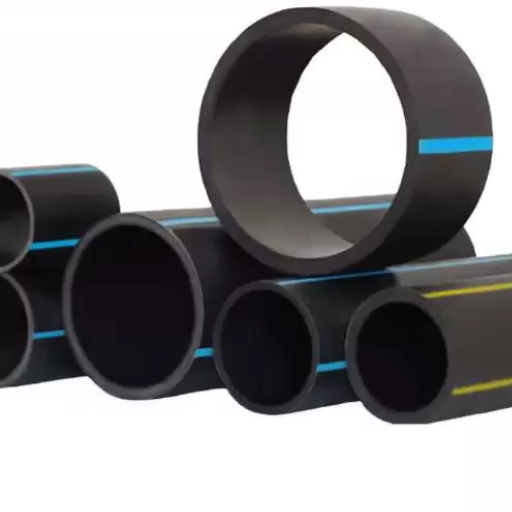
Benefits of Using HDPE Pipes
- Durability and Longevity: HDPE pipes are extremely durable for a period beyond fifty years, provided they are properly installed and used. Their resistance to environmental stress cracking and fatigue allows a reliable service even under demanding conditions.
- Corrosion Resistance: In contrast to other traditional materials such as steel or concrete, HDPE pipes resist corrosion brought by chemicals, salts, and acids. Accordingly, these pipes find suitable applications for wastewater, chemical conveyance, and underground usages where corrosive elements could be interfering.
- Lightweight and Easy Installation: HDPE, being lighter than its metal or concrete counterparts, will reduce the cost of transportation and promote easier handling during installation. The lighter nature minimizes the use of heavy equipment and, thus, a faster and more economical installation is possible.
- Flexibility and Stress Resistance: HDPE pipes are flexible and can cushion shocks and vibrations from within and without, which is critical in seismic-prone areas. Being sufficiently stiff, they can be bent without compromising the structural integrity of the pipe to navigate around obstacles during installation.
- Leak-Free Joints: The heat fusion technology is used by HDPE pipes to ensure joints are continuous and leak-proof. Such a joint would guarantee a good connection and eliminate the hazards related to leakage at a joint, and they become very efficient for pressure piping systems, and maintenance costs are greatly reduced in the long run.
Limitations of PE Pipes
While many advantages are known for polyethylene pipes, their limitations may tie in with certain cases of application. Very much important in this regard is the limitation in temperature resistance. PE pipes have a relatively low maximum operating temperature of usually about 140°F (60°C) for the normal grade and, therefore, are not suitable when high-temperature fluids are involved or during prolonged exposure to direct sunlight under extreme climatic conditions.
Another kind of limitation is chemical degradation. While PE pipes have very good chemical resistance against almost all substances, materials can degrade when exposed to strong oxidizing agents or very concentrated hydrocarbons, leading to loss of structural integrity upon prolonged exposure.
The last thing would be low rigidity when compared to metal or concrete alternatives. This is less stiff, so backfilling and bedding need to be carefully done; it would otherwise deform under heavy loads, especially in cases of deep burial and heavy traffic loading. This is very much required, and foresight in installation goes a long way in alleviating these problems and would be very much helpful for long-term performance.
And finally, initial costs of specialized equipment and personnel training required for heat fusion joining might be considered barriers, at least for smaller-scale projects with limited budgets. While maintenance savings down the road will almost always justify the upfront cost, it can be difficult to make this decision upfront for some users. Their knowledge helps install engineers and decision-makers through use cases that are considered suitable for PE pipes.
Cost Considerations for HDPE vs PE
In considering the cost dynamics existing between HDPE and PE, one must take into account several crucial factors, such as the material price, installation costs, durability, and lifecycle costs. The greater density and superior properties of HDPE, such as better tensile strength and chemical resistance, make it a higher-priced material compared to standard PE. However, in the long run, the higher price for HDPE is often offset by the several years it lasts, saving much in terms of replacements and repairs.
Installation costs give yet another perspective to the financial differentiation of materials. The greater flexibility of HDPE, in conjunction with advanced joining methods such as heat fusion, can lower installation times and labor costs when used appropriately within project designs, thereby generating significant cost savings, especially on big projects. PE pipes, on the other hand, have lower upfront costs but may maximize cost considerations down the line if their lower strength leads to the need for more joints than required in an advanced design.
Lifecycle-wise, HDPE generally features more in front when exposed to harsh environments that may include extreme temperature, pressure, or aggressive chemical attack. This directly contributes to the efficiency and reliability of HDPE systems in the long term, with the consequent decrease in the cost of operations. In comparison, PE pipes will most likely generate relatively higher maintenance costs in such situations for their much lower endurance.
Ultimately, it should be a thorough cost/benefit matrix of HDPE and PE considering the project scope and environmental factors and expectations of long-term performance. HDPE could be a little more expensive initially; however, its long-term benefits inevitably pay off when used in an application requiring high levels of durability and resilience.
Applications Across Industries
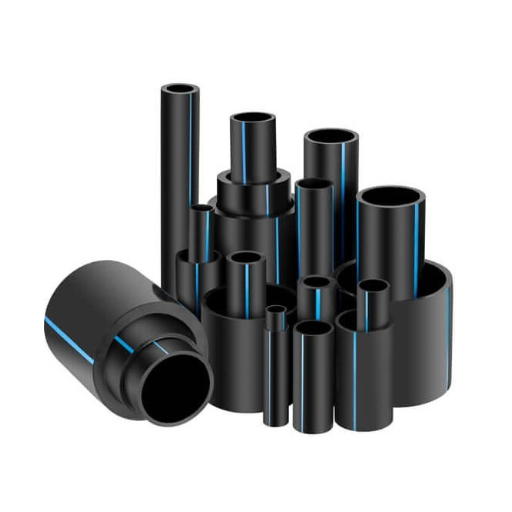
Use of HDPE Pipes in Construction
High-density polyethylene (HDPE) pipes have remained the material of choice in construction due to their vast versatility, durability, and cost efficiency. These pipes have wide applications, such as in water supply systems, drainage systems, and gas pipelines. Their lightweight reduces transport and installation cost than other traditional materials like iron and concrete. Further, HDPE pipes are highly resistant to corrosion, chemical action, and UV rays, thereby proving to be the ideal option for underground or exposed installation.
One of the chief advantages that HDPE pipes have in construction is their ability to withstand high pressure whilst still possessing flexibility. For example, this flexibility lessens installation constraints within terrains or in seismic zones and also reduces the potential of fractures or displacements. Further, the fusion welding of the most common HDPE pipe forms leak-proof joints, minimizing water loss from leaks and the need for maintenance as time passes.
The growing demands of construction have further increased the performance of HDPE pipes with advances in HDPE pipe manufacturing. Multilayer constructions and newer blends of polymers improve the strength-to-weight ratio and resist wear and abrasion-one more assurance that HDPE pipe fulfills the needs of contemporary construction abstractions with utmost safety and durability.
PE Pipes in Agricultural Applications
PE pipes play a big role in modern-day agricultural practices for a sustainable transfer of irrigation and water. Being flexible, chemical resistant, and light in weight, PE pipes seem to be the best option for water delivery for crops across terrains, from flat surface fields to uneven hilly areas. Due to their corrosion-proof and scale-proof nature, even exposure to chemical fertilizers or saline water that is so common in agricultural fields does not put their performance or working capacity in jeopardy.
In agriculture, PE pipes mostly take advantage of drip irrigation systems, where water is delivered exactly to the crop root zone. This minimizes evaporation and water wastage, leading to better water-use efficiency. Studies have revealed that if farmers use PE pipes for drip irrigation, water use significantly diminishes by around 60% compared to that used in traditional flood irrigation methods, with an increase in crop yields.
PE pipes also bring a great deal of flexibility to the table. They come in different diameters, pressure ratings, and lengths, and suit applications in small-scale farms to bigger commercial agricultural setups. Fusion welding techniques used for joining PE pipes promote a leak-proof joint, thereby increasing operational efficiency. Due to further developments in material engineering, the presently used PE pipes also exhibit enhanced weather resistance against UV radiation, hence ensuring enhanced longevity of the pipes in open agricultural areas under exposure to sunlight over long periods. The user-friendliness and engineering perfection make PE pipes truly worthy of being the backbone of sustainable and efficient agricultural practice.
Utilities and Infrastructure: Choosing the Right Pipe
Specification and design of pipes for utilities and infrastructure require understanding particular application requirements to ensure long-term performance, reliability, and cost-effectiveness. For instance, typical materials used in water supply and distribution systems include ductile iron, PVC, and polyethylene or PE. Each has its own set of advantages: ductile pipes, having great tensile strength and pressure-resisting capability, may be installed in large industrial-type municipal systems, whereas PVC and PE pipes are light, corrosion-resistant, and easy to handle, thus reducing labor costs.
Considering wastewater and drainage systems, the corrosion factor becomes of utmost importance because of the corrosive nature of the substances involved. HDPE pipes find huge application in such scenarios mainly due to their non-jointed nature that minimizes joint failures and eventual leakages. Another solution could see concrete pipes in stormwater applications on a large scale while handling very big loads and offering them a good life for decades if maintained.
Pipe material selection should also consider the environmental conditions. Properties such as thermal resistance, chemical resistance, and susceptibility to UV degradation should be matched to the operating environment. For example, HDPE pipes provide the best flexibility and crack resistance in areas with finger-gripping temperature fluctuations, whereas reinforced concrete pipes might be best in heavy load-bearing applications.
Research studies carried out recently highlight how the industry is moving towards drilling the solutions, keeping sustainability, and novel solutions into consideration, such as the trenchless pipe-laying technologies that drastically reduce terms of environmental impact and time-frame for completion of a project. Utilities and infrastructure developers now have a wider and more sophisticated array of options to optimize systems for performance, durability, and environmental compliance, with technology advancing at an unprecedented rate.
Durability and Performance Factors
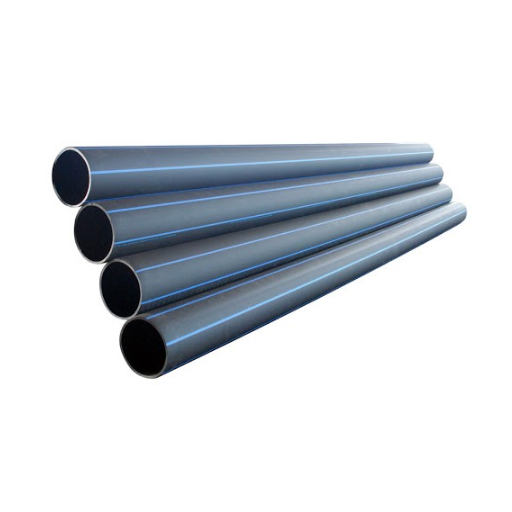
Corrosion Resistance of HDPE and PE Pipes
HDPE and PE pipes are highly corrosion resistant, hence the need for their use in certain industrial, municipal, and environmental applications. Traditional materials, for example, steel, cast iron, or concrete, are susceptible to corrosion in the soil or chemicals, whereas HDPE and PE types of pipes. Such corrosion resistance is invaluable under conditions of high salinity or acidity, where metal pipes usually deteriorate quickly.
HDPE and PE are polymers extended into long chains of hydrocarbon molecules, which then present a surface upon which chemical action from chlorides, sulfates, and aggressive acids cannot set in. For instance, research has shown that HDPE pipes retain their structural integrity when exposed to solutions with pH ranging from as low as 1 to as high as 14. Also, being fully resistant to galvanic and electrolytic corrosion guarantees the proper functioning of the installations, whether underground or above ground.
Up to around 50 years or even more, HDPE and PE pipes can last under standard operating conditions, well surpassing many traditional materials. Furthermore, the reduced maintenance needs due to such corrosion-resistance properties also make for lower life cycle costs. Given these factors, HDPE and PE pipes are increasingly used wherever sustainability and minimum adverse environmental implications are considered, such as in potable water supplies, gas distribution, and wastewater infrastructure.
Advancements in manufacturing methods, along with developments in resin formulations, have further improved the corrosion resistance offered by HDPE and PE pipes and have hence indisputably established these pipes as a technically superlative solution for a wide array of industries.
Long-Term Performance of Pipe Systems
The long-term performance of piping systems is essentially determined by their ability to maintain structural integrity amidst environmental and mechanical stresses and to function reliably over long periods. HDPE pipes with their higher stress-crack resistance, flexibility, and chemical inertness are considered to be the gold standard for durability. Studies show that, in the case of normal operating conditions, HDPE pipe life can extend from 50 to 100 years, showing high resistance against such agents as corrosion, abrasion, or material fatigue.
Critical to the longevity are those forces that act on the material from the inside and outside, such as operating pressure during fluid transport or load stresses arising from surrounding infrastructure. Modern PE resins used for pipe production are engineered to meet industry standards, ISO 4427 and ASTM D3350, which stipulate compliance in domains from tensile strength and resistance against slow crack growth to tolerance against temperature.
Computerized simulations and documented field experiences further validate the superior performance of HDPE pipes in scenarios of variable temperature gradients and chemically hostile environments. These qualities ensure infrequent intervention costs for maintenance, repair, and replacement, thus making them an economically supportive option. Full Risk assessments also reveal that HDPE pipe systems installed as per industry standards record performance with negligible failure rates within prescribed performance limits.
Fitting and Compatibility with Other Materials
Versatile HDPE pipes fit into almost all fitting furniture, given their flexible and durable nature and chemical resistance. Their universal potential stems from the ability of the pipes to seamlessly fit into connectors, couplings, and transition fittings made of metals such as steel, brass, and copper. Fittings should be carefully chosen to ensure the secure fit of piping and long-lasting reliability according to the pressure and temperature requirements of the operation, as well as the specific application itself. Electrofusion and butt-fusion welding create leak-proof joints with high tensile strength, thereby improving compatibility and reducing associated long-term risks usually present with traditional mechanical methods of coupling.
The latest trend in construction and piping materials is the release of newer transition fittings that address the structural and performance differences between HDPE and other piping systems, such as PVC, ductile iron, or galvanized steel. These transition fittings thereby assure minimal flow-rate disruptions, consistency in mechanical integrity, and system life expectancy even in challenging operating environments. Primarily intended for the rehabilitation of old infrastructure where legacy systems are to be upgraded, preserving the mechanical and operational performance parameters at their core, transition fittings are mostly useful. Field experience substantiates that the compatibility of HDPE with several materials enables hybrid systems to perform better while resolving corrosion, thermal expansion, or chemical incompatibility-related issues.
Moreover, the industry standards such as ASTM F2620 and ISO 21307 provide detailed instructions to obtain the optimum fitting and joining of HDPE pipes with other materials. Proper trainings in this regard help in reducing installation errors and guaranteeing uniform quality implementation in different projects. Comparative studies show that hybrid systems, including HDPE pipes with engineered fittings, have a longer service life and a lower failure rate than those of homogeneous material systems. This compatibility, coupled with HDPE`s lightweight and easy-handling properties, has ensured its application in municipal water networks, gas distribution, and industrial piping, and so forth.
References
Frequently Asked Questions (FAQ)
Q: What are the main differences between HDPE and PE pipes?
A: The main differences between HDPE and PE pipes lie in their molecular weight and density. HDPE, or high-density polyethylene, is a type of polyethylene material that has a higher molecular weight compared to ordinary PE pipes. This gives HDPE pipes enhanced strength, making them suitable for various applications, including water supply and sewage systems.
Q: What are the applications of HDPE pipes?
A: HDPE pipes are widely used for water supply, sewage, and irrigation systems due to their durability and resistance to corrosion. Their flexible nature allows for easier installation, while the fewer fittings required can reduce costs in the pipe industry. Additionally, HDPE is commonly used in plastic products and applications requiring high-density polyethylene material.
Q: How do HDPE pipes compare to PVC pipes?
A: HDPE pipes and PVC pipes are both popular choices in the pipe industry, but they differ in material properties. HDPE is a thermoplastic that is more flexible and resistant to impact than PVC, which is more rigid. While PVC pipes are often used for drainage and sewage, HDPE pipes are preferred for water supply due to their high-density polyethylene composition.
Q: Are there different types of PE pipes available?
A: Yes, there are different types of PE pipes, including ordinary PE pipes and medium-density polyethylene. Each type has specific applications and advantages. For example, high-density polyethylene pipes are often used in demanding environments, while medium-density polyethylene may be suitable for less critical applications.
Q: What are the benefits of using HDPE fittings?
A: The benefits of using HDPE fittings include their compatibility with high-density polyethylene pipes, resistance to corrosion, and ability to withstand high pressures. HDPE fittings also require fewer joints, which can lead to a more reliable and efficient plumbing system, especially in applications involving sewage and water supply.
Q: Can HDPE pipes be used for sewage systems?
A: Yes, HDPE pipes are commonly used in sewage systems due to their resistance to chemicals and durability. They can handle the harsh conditions often found in sewage applications and are less prone to leaks compared to traditional materials such as concrete and steel pipes.
Q: What is the significance of molecular weight in plastic pipes?
A: Molecular weight is significant in determining the strength and flexibility of plastic pipes. Higher molecular weight in HDPE pipes contributes to their enhanced durability and resistance to deformation under stress, making them ideal for various applications, including water supply and sewage infrastructure.
Q: How does the flexibility of HDPE compare to other pipe materials?
A: HDPE is known for its flexibility compared to other pipe materials like concrete and steel pipes. This flexibility allows HDPE pipes to bend and conform to the ground’s contours, making installation easier and reducing the risk of damage from ground movement or settling.
Q: What types of fittings are compatible with HDPE pipes?
A: HDPE pipe fittings are specifically designed to connect high-density polyethylene pipes securely. These fittings come in various shapes and sizes, allowing for versatile installation options in plumbing systems. Their compatibility makes them essential for applications involving water supply and sewage systems.






